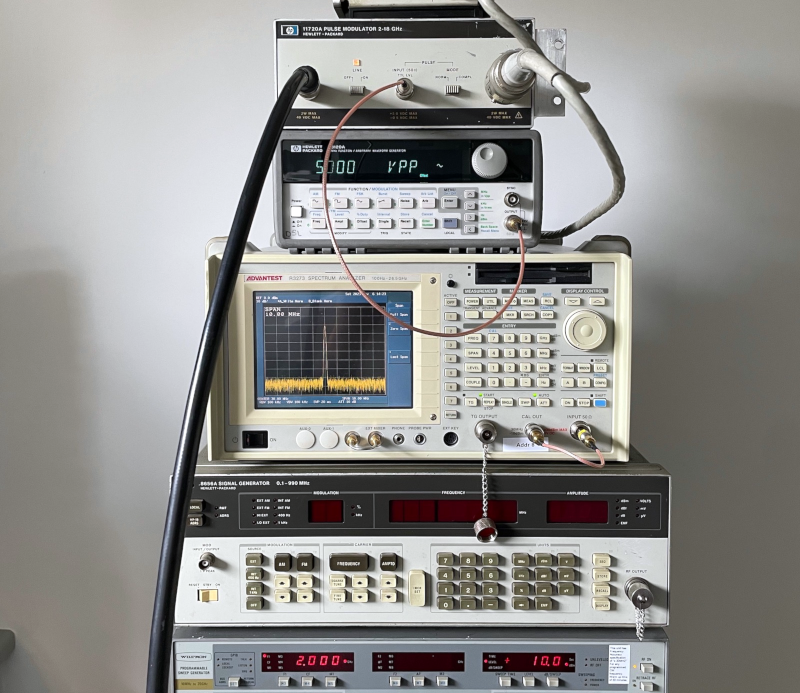In the realm of test equipment, there are a number of items that you don’t know you need until you need one. That’s probably the case with the HP11720A pulse modulator. [Tom] acquired two of these even though, by his own admission, he had “no need for these things.” We’d like to say we don’t get that, but — alas — we do.
The good news, though, is he used one of them to measure the quality of some coax cable and shared the exercise with us in the post and a video, which you can watch below. The device can generate pulses with extremely fast rise and fall times (under 10 nanoseconds) at frequencies from 2 to 18 GHz. These were often used in pulsed radar applications and probably cost quite a bit more new than [Tom] shelled out for them.
We also get a peek inside the 1970s-era box. The construction is neat, and it uses a PIN diode for RF switching. The manual has a schematic and theory of operation section, which [Tom] summarizes in the post. The stack of test gear is, by itself, very impressive, and if you are interested in the performance of coax, you might find the actual data useful, too.
We’ve seen many pulse generators, but few with the specs of these. If you need something more modest, you can easily homebrew something with some 555s. But don’t expect nanoseconds and gigahertz!

















I’m unfamiliar with the term “Pulse Modulator”
Though I do own an HP Pulse Generator.
I was unfamiliar as well, hence the blog post! But I own and recently wrote about a very old HP pulse generator too: https://tomverbeure.github.io/2023/04/01/Cable-Length-Measurement-with-an-HP-8007B-Pulse-Generator.html.
“some 555s. But don’t expect nanoseconds and gigahertz!”
Wanna bet? I smell some new HaD challenge with prize
Wait a sec [heh].
10ns at 2 GHz would mean that the pulse is 1/20th through before the next cycle comes? I.e. 50 millipulses per cycle?
My hunch is the rise time should be 20 picoseconds.
10ns is the time for the pulse modulator to switch the RF signal on or off.
You are right. I misspoke.
Excellent. Had similar fun with PCI-Ex Gen 1 and 2 with PCB attenuation loop back setups, SMA, and expensive blue R brand cables. Management got upset when the main cables connectors didn’t last 2 months of week-long use. And I didn’t use a wrench either.